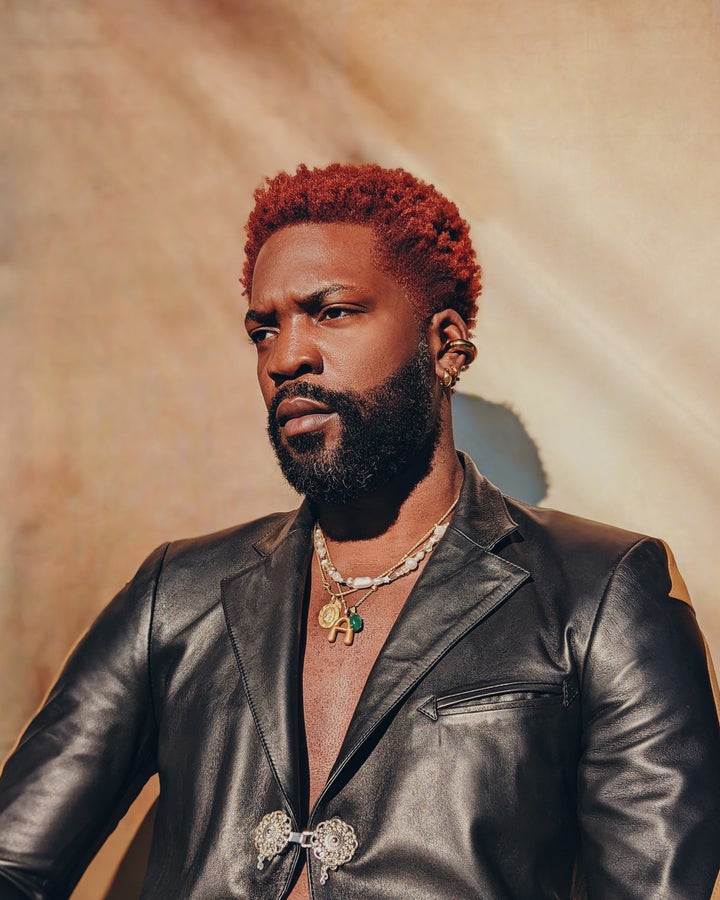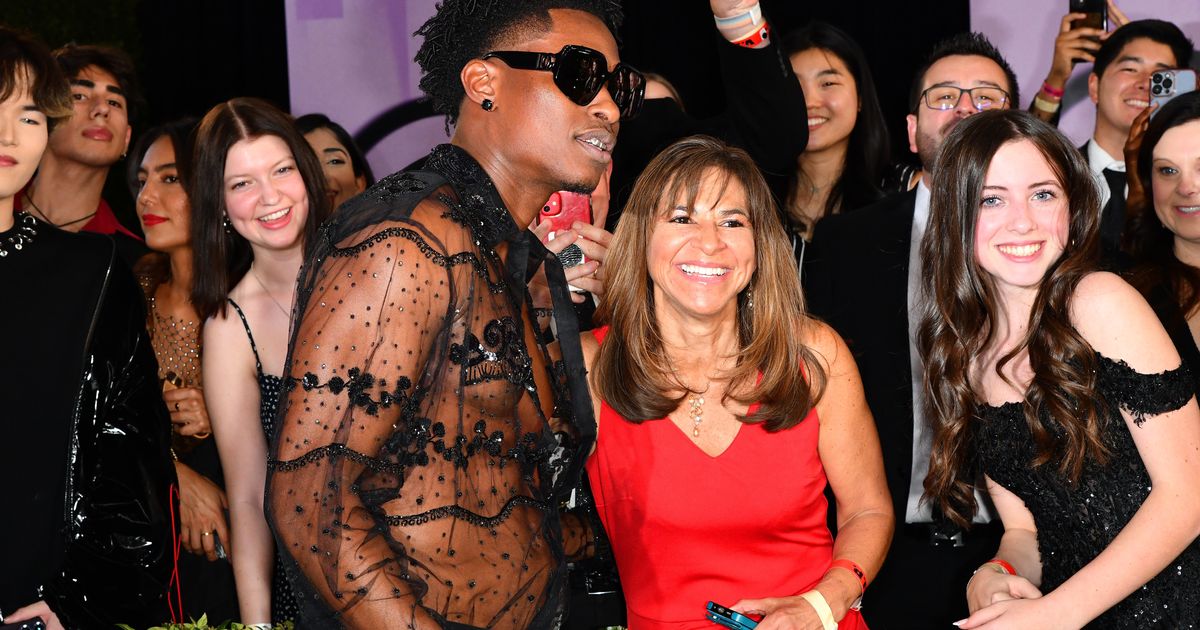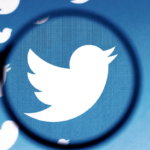The glitz and glamour of entertainment is nothing without the people who dress today’s biggest stars. For “Who’s Behind the Clothes,” HuffPost spotlights stylists and costume designers who have delivered some of our favorite celebrities’ or characters’ most memorable looks. Read my interview with “Insecure” costume designer Ayanna James Kimani.
Ciara in Roberto Cavalli for Ebony. Becky G in Schiaparelli for Teen Vogue. Method Man in Louis Vuitton for Essence. Joe Keery in Gucci for GQ. Where there is a well-styled magazine cover, Alexander-Julian Gibbson is likely behind it, working meticulously off-camera.
With a decade of experience, the 29-year-old creative director and editorial stylist has dressed some of today’s biggest emerging stars and household names, from Laverne Cox to Chloe Bailey, Lil Nas X and more. Before he became R&B singer Lucky Daye’s personal stylist, Gibbson was a teenager from Houston with lofty aspirations.
“I always enjoyed style and in high school, I had a clothing line that I did fashion shows for and photo shoots for. The name of my fashion line was WDYM. It stood for ‘Well-Dressed Young Men,’” he laughed, cringing at the name in retrospect. “It’s so corny! Anywho, that was the name of my clothing line that I made when I was 16.”
Raised in a Nigerian household, style was always a cornerstone of Gibbson’s life, be it dressing up for church or parties. Yet stability was paramount. He attended Howard University on the pre-law track — until one internship at XXL Magazine in 2012 made him change course. He switched his major to public relations, and Gibbson went on to intern at Flaunt Magazine and Fendi, where he landed his first job.
Since then, Gibbson has made a name for himself in the fashion industry, from landing features in Vogue to earning a spot on Black Enterprise’s 40 Under 40 list. From his humble beginnings planning the Howard University homecoming fashion show to getting Lucky Daye dressed for his Candydrip tour, Gibbson is just getting started.
“Styling is, in large part, literally just problem-solving,” he said. “What is the situation at hand and what is required of me? And how can I fill that out? After I figure out how to make it happen, then I start applying my own style and my own flare to it. I’m a stylist, but I love creative direction. I love being able to assess where you are, where you want to be and where you want to go.”
For “Who’s Behind the Clothes,” Gibbson talked to HuffPost in September about his 10-year creative journey working in editorial, how his alma mater prepared him for the fashion industry and the passion projects and clientele that fuel him.

What was the impetus for getting into styling and fashion and who inspired you to do that?
Growing up in a Nigerian home, my mom wasn’t too pressed about it, but a lot of my family around me were very pressed about it — so the goal was to be a doctor, lawyer or an engineer. I was going to go the lawyer route. I always enjoyed style and in high school, I had a clothing line that I did fashion shows for and photo shoots for. I had a real website and everything, so it was always an outlet for me. When I went to college, I thought about what was my favorite part of having my own clothing line — because I did everything — but my favorite part was styling. But I was still focused on becoming a lawyer and I was afraid: How would I make it as someone with no connections, my parents are immigrants and I live in Houston, Texas? That is not anywhere close to New York.
Until I ended up going to Howard University for school, and that brought me closer to New York and broadened my horizons. I got an internship in New York at XXL Magazine, where I was the fashion director’s intern. I did it and I got to style my first photo shoot for the magazine. I came up with an eight-page spread, the concept and everything. My boss really loved the work I did and was like, “Look, whenever you graduate, you have a job with me.” And I thought, “OK, cool. I have a job, and that’s without me trying fashion seriously. What can I achieve if I take this seriously?”
How would you describe your sense of style, and how has your Nigerian heritage contributed to it? How would you say your personal style has evolved?
I think Black people are the best-dressed people in the world, and I think being Nigerian, being able to interact with the culture, you have to have style. I was raised in Houston where there’s tons of Nigerians, so I went to Nigerian parties every week. I went to a Nigerian church where you come in a fit. If you think about the concept of Nigerian clothes, you go, you pick a fabric, then you design an outfit and have somebody make it. That’s how it is. You can’t go buy Nigerian clothes off the rack. You have to put in work, and you have to have a stylistic eye to even take part in the culture. My mom is very much a believer and a participant in the process of Africanwear, and she loves clothes and art. I don’t think she’s gotten to explore in the way that she probably could have, which I think makes me always feel a bit more thoughtful about the fact that I’m doing what I’m doing. I feel like I’m doing it for both of us. But yeah, she loves clothes, loves style, loves aesthetics. It’s something that was always in me. Even when I did dress badly, I did it purposefully. I liked those clothes, and I wore them — even though I look back like, what the hell was I thinking?
I would say my style has evolved in a weird, almost regressive, but an interesting way. I grew up in that environment where I was always dressed every day, and didn’t repeat outfits. I think the pandemic helped change me a bit and working for myself, where I’m not always going to something or doing something, helped me appreciate comfort. I like where I’m at now because I feel there’s a really cool marriage between comfort and style. You find an interesting space when you try to achieve both. I look a whole lot more relaxed these days, while still stylish, and it still has the notes that I think I’ve always had. There’s a love of pieces that are interesting and eclectic, but it’s just that now, I can wear the craziest jacket you can think of and wear sweats with it — but the sweats are fitted, well-thought out. It feels a bit effortless. I feel like that’s something that comes from living in New York; everybody here has a kind of effortlessness to their own personal style.
Upon starting your career, did you feel like there was a big learning curve? And what are some of the obstacles you’ve encountered that people typically don’t consider or think about? All we see is the final product on a magazine cover.
I grew up always harping on the idea of hard work and thinking, “If you work hard and do what you’re supposed to do, things will work out,” and coming to New York, I learned that that’s literally so little of it. There’s so much politics. It’s very much who you know and how close you are to somebody. I think at Howard, I learned a bit about who you know because I was able to experience some opportunities because of [connections]. I think New York even goes past it, because I think being Black in New York is one thing, and it’s already tough. Obviously, it’s shifted a lot, but I think when I was starting, we weren’t as embedded in the industry as we are now.
It was hard because I couldn’t relate to anybody. I was working with a ton of rich white people. I’m not rich, I’m Black, and not even from the same area. It felt like a serious culture difference. For a large part of it, I felt like I couldn’t relate to a lot of people on anything. After Fendi, I went to GQ. Even with a lot of my white friends at GQ — it was a running joke — every time they’d be talking about something, I was like, “I literally have no idea what the hell y’all are talking about, so you’re going need to explain to me who this person is or what these references are.” All the time.
It was just learning that there are politics. Obviously, I think I was set back in the game of politics because I was so far removed from everything that they had known. Things like, “Oh, this person can’t shoot this because they worked with this person” and all types of crazy stuff like that. Or, “Although we love this outfit, it can’t be on the cover because the cover needs to be this brand because they actually pay advertising dollars.” Even stupid stuff like, “Oh, you can’t work here because you work for this person right now, and I don’t want to get on their bad side.” All really stupid things — but learning that a lot of this all was a game and that talent will get you less than half the way.
I wonder about the values that were instilled in you at Howard and the pipelines — or lack thereof — that existed to bring HBCU students into fashion. Did you ever feel at a disadvantage in comparison to FIT or Kent State students?
Honestly, the Howard experience was such an amazing experience I’d never even thought of it like that. In any way that it could have maybe set me back from anything, it launched me forward in the opposite way 10 times more. Even having the confidence or or the thought process to put myself into what I do … there are so many things that I did at Howard that when I left Howard and went to work for these companies, they were doing smaller shit than what I’d already done. I was on the HU homecoming board and planned it. I was working with a $100,000 or a $75,000 budget when I was a sophomore in college and executing multi-layered concepts that I had come up with in my dorm room. When you do that and Fendi is doing a store opening and they give you a $30,000-$50,000 budget, it’s nothing.
I was flying in designers from all over the world from our fashion show that I did at Howard, because that’s just a part of it. They always empowered us at Howard to feel like we could do anything. I’d never been the type to be like, “Oh, I want to be an entrepreneur.” I was very much always fine working for somebody. At Howard, it was always like, “Oh, you do this? Oh, you should start a business.” Even the grind of going to Howard, nothing comes easy at all. You have to work extremely hard for everything, even to get registered for classes. Because I did all that, I learned to not take no for an answer, to buckle up and hit the pavement when I need to, and so many things that made me stronger as a creative.
Recently, you styled the Howard University x Jumpman promo, kicking off your alma mater’s collaboration with the Jordan Brand. What did it mean to you to go back to “The Mecca” and be at the helm of that?
I definitely want to do more stuff with Howard. It’s one call I will always answer. I was literally three days out from knee surgery when they asked me to do it. I was like, “Uh, I probably shouldn’t — but yes, I’ll be there!” It meant a lot to go because if I didn’t go to Howard, I wouldn’t be doing what I’m doing now. Howard will always have a special place in my heart. It was very important for me to go back and be able to do what I’m doing in the context of the place that got me to where I am.
You’ve done a wide range of work, from editorial covers for Essence, Teen Vogue, GQ, styling the cast of “Love & Hip Hop” for promos to dressing Lucky Daye for music videos, red carpet appearances and his tours. Every artist, every client has a different set of needs, so what is the framework that you operate from to make sure that all of their standards are met?
Styling is, in large part, literally just problem-solving. Even if you work with the same artist, every performance is different. For example, if I’m styling Lucky for late night, there’s a certain set of designers that I’m able to have access to. If I’m styling him for a magazine cover, depending on that magazine or who’s shooting it, there is now a new level of designers I have access to. Every situation has been totally different. So the first thing I like to think about is, what problem do I solve right now? What is the situation at hand and what is required of me? And how can I fill that out?
After I figure out how to make it happen, then I start applying my own style and my own flair to it. What specifically makes it something that I can add to? The first thing I think about on any job is: How the hell am I about to do this? Now that I’ve figured out the logistics of doing it, how can I make it me? How can I make it something that feels like my work? It’s just solving those problems and when people come in with new stipulations — like “I want to wear this” or “I don’t want to wear that” — it’s like, “OK, well here are our options based on those parameters that you’ve given me.” We come up with the best one, and it’s a collaborative effort.
What is the type of client that gets you excited and the type of client that aligns or resonates with you?
I think it’s somebody who’s up and coming. I’m a stylist but I love creative direction. I love being able to assess where you are, where you want to be and where you want to go. Then build a look around that. I like working with people who are excited about clothes and enjoy trying things. Obviously, my mind can go as crazy as it can get, but that’s not for everybody.
On the note of creative direction, you launched “The Land of Milk & Honey” last year, a photo series examining immigrant experiences in the United States. I thought that it was absolutely stunning, and for once, it showcased Black immigrants, because we’re often left out of the conversation. What spurred its inception?
That project is something really near and dear to me, because it came right after [Donald] Trump was elected. I was just feeling like there was so much of this terrible rhetoric around xenophobia and racism and I was like, ’This is fucking sick.” I felt really hopeless about America and really powerless, so I wanted to figure out a way that I can do something within the context of what I do. That’s how that project was born. The whole point of it is to rearrange what we picture when we think of an “American face.” I wanted to highlight all the different communities that have contributed to America and American culture via their own culture. One of the things I like to say I love about America is that it’s supposed to be a melting pot. When you grow up and think of that, know of that and then start hearing all these crazy things against people who come from wherever they come from to come here, it’s jarring. I wanted our project to combat that. We’ve been traveling around in different pockets of culture within and around the country, from Chinatown in Brooklyn to Hialeah, Florida, which has the largest population of Cubans in America. We shot these families with photographers who are from the culture, then I styled them in designers from the culture as well. It’s this love letter to immigrant culture in America.
Who are some of your favorite designers or labels that you frequent and why?
My all-time favorite designer is Haider Ackermann. I love him. I love everything that he does, and he’s just now announced that he’s going to be doing the Jean Paul Gaultier couture show. I like a lot of designers, a lot of my friends who are designers, people like Christopher John Rogers, Adebayo from Orange Culture. I love the work that my friends do.
Looking back on your career, what advice would you give to a young Black or brown kid from an immigrant family in the South on how to make it in the industry?
I would say do it on your own. Keep trying it, even if you’re doing it on your own. Having my clothing line, having my blog in college, and not waiting for the opportunity for somebody to hand me an opportunity gave me a one-up when I was presented with an opportunity.


